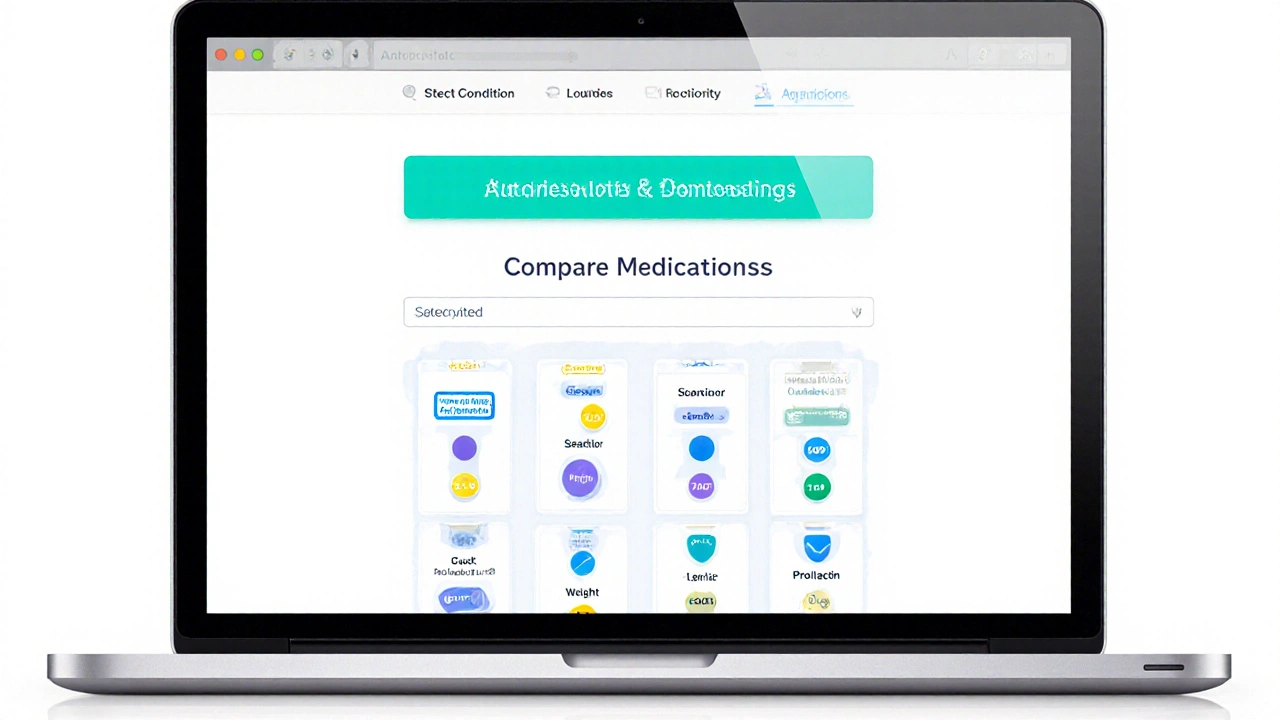
Seroquel (Quetiapine) vs Other Antipsychotics: A Practical Comparison
A detailed comparison of Seroquel (quetiapine) with major antipsychotic alternatives, covering efficacy, side effects, cost and tips for choosing the right medication.
When working with Seroquel, the brand name for quetiapine, an atypical antipsychotic used to manage schizophrenia and bipolar disorder. Also known as quetiapine, it works by balancing dopamine and serotonin pathways in the brain., you’re dealing with a key antipsychotic medication, a class of drugs that treat psychotic symptoms by modulating neurotransmitter activity. This class encompasses treatments for schizophrenia, a chronic brain disorder marked by hallucinations, delusions, and thought disorder, and it also influences mood stability in bipolar disorder. Because Seroquel sits at the intersection of these conditions, comparing it to its peers helps clinicians and patients choose the right balance of efficacy and tolerability.
One of the first questions patients ask is how Seroquel’s dosage forms stack up against other market leaders. The drug is available in immediate‑release tablets (25‑800 mg) and a once‑daily extended‑release version (50‑300 mg). Generic quetiapine mirrors these strengths, offering lower cost without sacrificing the pharmacokinetic profile. In contrast, Risperdal, the brand name for risperidone, a shorter‑acting atypical antipsychotic comes in oral tablets and a liquid form, but it generally requires a higher dosing frequency. Zyprexa, olanzapine’s brand name, offers both oral and injectable depots for long‑term management provides powerful symptom control but carries a heavier metabolic burden. The semantic link here is clear: Seroquel offers flexible dosing that can be tailored to both acute psychosis and maintenance therapy, whereas its counterparts often emphasize potency or dosing convenience.
Side‑effect profiles are the next big puzzle piece. Seroquel is notorious for sedation, especially at lower doses, which can be a plus for patients battling insomnia but a drawback for those needing daytime alertness. Weight gain and metabolic changes occur, yet they tend to be less severe than with Zyprexa, which ranks highest for BMI increase and cholesterol spikes. Risperdal brings a higher risk of extrapyramidal symptoms (EPS) such as tremor and rigidity, particularly when the dose exceeds 4 mg per day. By mapping these risks, we see a pattern: Seroquel comparison often hinges on the trade‑off between calming effects and metabolic safety, while other atypicals balance motor side effects against metabolic impact.
When deciding which drug fits best, consider three core attributes: therapeutic target, side‑effect tolerance, and dosing convenience. If the primary goal is rapid control of psychotic bursts with minimal EPS, Seroquel’s sedating quality may be a win, especially in patients who also struggle with sleep. For those whose main concern is weight gain, Zyprexa might be off the table, nudging the choice toward Seroquel or Risperdal. Patients who dislike daily pills may opt for Zyprexa’s depot injection, while others who value flexible dosing will appreciate Seroquel’s immediate‑release and XR options. This decision matrix illustrates the semantic triple: Patient profile determines drug selection, and drug selection affects side‑effect experience.
Another layer to the comparison is cost and accessibility. Generic quetiapine has become widely available in many markets, driving down the price point dramatically compared to brand‑only options like Zyprexa. Insurance formularies often place Seroquel and its generic in preferred tiers, making it a financially sensible first‑line choice for many clinicians. Risperdal, while older, still enjoys generic status, but its need for more frequent dosing can increase pharmacy visits and co‑pay totals. Understanding these economic nuances helps patients stay adherent without breaking the bank.
Clinical guidelines also shape how Seroquel is positioned. The American Psychiatric Association recommends quetiapine for both schizophrenia and bipolar I disorder, citing its dual efficacy for psychosis and mood stabilization. In contrast, some guidelines reserve Zyprexa for treatment‑resistant cases due to its stronger metabolic side‑effects. Risperdal often appears in first‑episode schizophrenia protocols where low EPS risk is crucial. These guideline‑driven relationships reinforce the semantic chain: official recommendations guide prescribing patterns, which in turn influence patient outcomes.
Finally, real‑world patient experiences add depth to the comparison. Many forums report that Seroquel’s calming effect improves daytime functioning for individuals with mixed‑episode bipolar disorder, while others note the lingering drowsiness as a deal‑breaker. Those on Zyprexa frequently mention rapid symptom relief but struggle with weight gain and blood sugar changes. Risperdal users often highlight fewer metabolic concerns but a higher chance of muscle stiffness. These anecdotal data points echo the earlier semantic triples, linking drug characteristics to daily life impact.
Below you’ll find a curated list of articles that dive deeper into each of these aspects—dose optimization, side‑effect management, cost‑saving tips, and head‑to‑head drug charts. Whether you’re a patient, caregiver, or healthcare professional, the resources will give you the concrete details you need to weigh the pros and cons of Seroquel against its competitors and make an informed choice.

A detailed comparison of Seroquel (quetiapine) with major antipsychotic alternatives, covering efficacy, side effects, cost and tips for choosing the right medication.